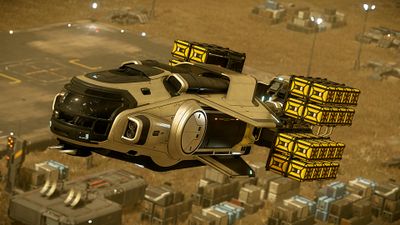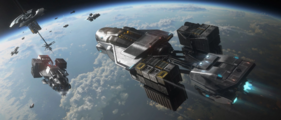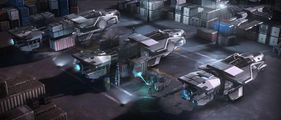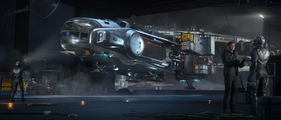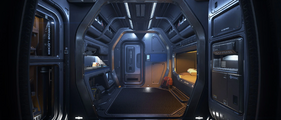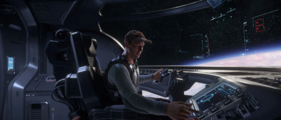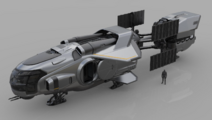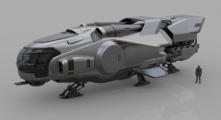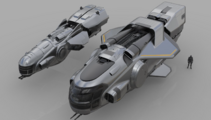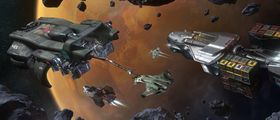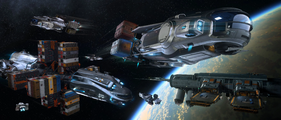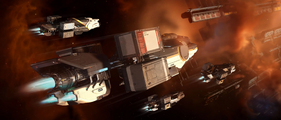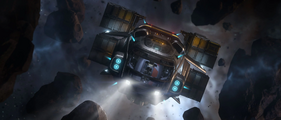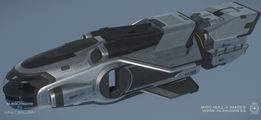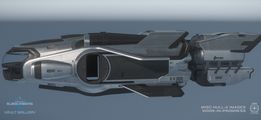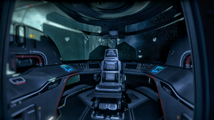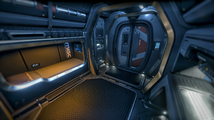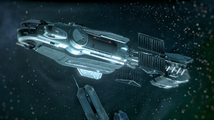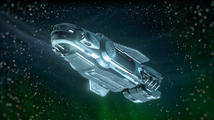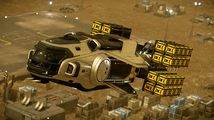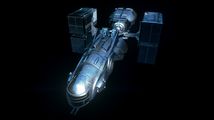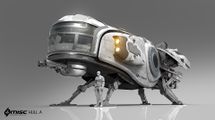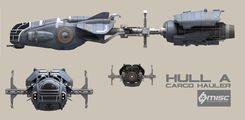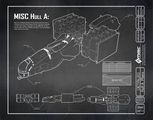Quick facts:Hull A
The small and efficient MISC Hull A is the entry-level model in the Hull series. Featuring a retracting external cargo spindle and powerful engines, this ship has the largest cargo capacity in its size class. Care should be taken when traveling in low-security areas, however: the Hull A lacks significant offensive or defensive capabilities, with armament limited to a pair of forward-facing size 1 distortion repeaters.
In addition to its standard use as a light hauler, the Hull A is often used as a surface-to-orbit ferry.[1] It can carry its load in any fitting mix of 1-SCU containers, 2-SCU containers, 8-SCU containers or 16-SCU containers.[2][3][4]
Features
Specifications
Model
Ship profile
Series variants
| Image | Name | Description |
|---|---|---|
 |
Hull B | The Hull B is a capable, efficient cargo ship most often compared to MISC’s own Freelancer. But where the Freelancer is equipped for long range exploration and other roles, the Hull B is a pure cargo transport. |
 |
Hull C | The middle ground between single-person transporters and massive super-freighters. |
 |
Hull D | The Hull D kicks off the larger end of the spectrum with a massive ship built around a rugged frame. |
 |
Hull E | The ultimate edition of the Hull series. The Hull E is one of the largest player owned ships in the game and requires proper planning and preparation for the trips it will make. |
Paints
| "Bombora" | "Blue Ametrine" | "Empyrean" | "Horizon" | "Trailblazer" |
|---|---|---|---|---|
 |
 |
 |
 |
 |
Acquisition
Lore
For most of the concern’s history, the majority of MISC’s business has come from the production output of its heavy industrial division. MISC-HI is chiefly responsible for the Hull series range of configurable bulk transport spacecraft that have become ubiquitous in UEE space. These sturdy, modular hulls are the basis for the majority of Human corporate shipping. Their unexpected popularity among the Xi’an has spawned an unlikely business relationship (and a string of imitators on the other side of the border). When the line launched in 2802, four standard models ranged in size from the efficient Hull A to the gargantuan Hull D. The Hull series quickly revolutionized interstellar freight, leading to the standardization of dockyards and cargo processes around the UEE. This led to long-ranging knock-on effects, including over a dozen outside companies being founded or significantly shifting focus to support the Hull design, such as Argo Astronautics launching its MPUV line of short-range cargo ferries. In 2820, MISC developed a fifth ‘super-freighter’, the Hull E, which has since become the de facto interplanetary bulk goods transporter, with docks around the galaxy moving cargo containers back and forth from the huge ships around the clock[6]
Gallery
See also
- Q&A: MISC Hull A
- "Behind the Scenes: Making the MISC Hull A". Jump Point. Vol. 10 no. 4. pp. 3–14
References
- ↑ Hull A Store page. Pledge Store
- ↑ Q&A: MISC Hull A. Engineering - Comm-Link
- ↑ Hull A with cargo loaded. Adam Parker: «Yes, the individual boxes are planned to be able to be replaced with 16 SCU containers, that is part of the cargo refactor iirc. instead of using the smallest crates, the system will figure out the largest crates that can be put on a cargo grid and use those, then use smaller and smaller crates until the grid is fully filled up.»
- ↑ "Behind the Scenes: Making the MISC Hull A". Jump Point. Vol. 10 no. 4. pp.12. Retrieved 2022-12-12.
- ↑ Inside Star Citizen: Hull of a Show. Retrieved 2022-12-12
- ↑ "Manufacturer feature: MISC". Jump Point. Vol. 10 no. 4. pp.18. Retrieved 2022-12-12.
